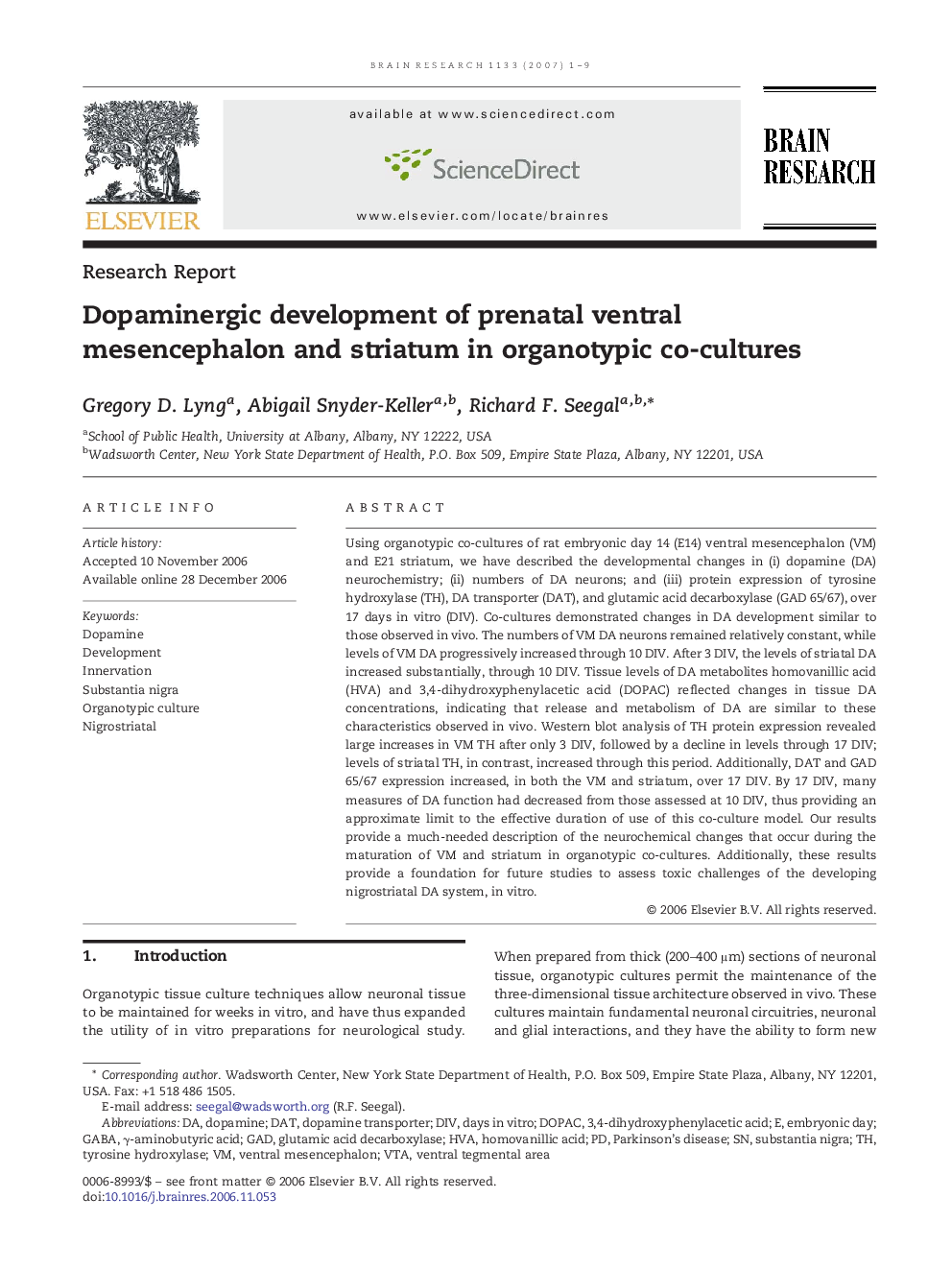| Article ID | Journal | Published Year | Pages | File Type |
|---|---|---|---|---|
| 4331637 | Brain Research | 2007 | 9 Pages |
Using organotypic co-cultures of rat embryonic day 14 (E14) ventral mesencephalon (VM) and E21 striatum, we have described the developmental changes in (i) dopamine (DA) neurochemistry; (ii) numbers of DA neurons; and (iii) protein expression of tyrosine hydroxylase (TH), DA transporter (DAT), and glutamic acid decarboxylase (GAD 65/67), over 17 days in vitro (DIV). Co-cultures demonstrated changes in DA development similar to those observed in vivo. The numbers of VM DA neurons remained relatively constant, while levels of VM DA progressively increased through 10 DIV. After 3 DIV, the levels of striatal DA increased substantially, through 10 DIV. Tissue levels of DA metabolites homovanillic acid (HVA) and 3,4-dihydroxyphenylacetic acid (DOPAC) reflected changes in tissue DA concentrations, indicating that release and metabolism of DA are similar to these characteristics observed in vivo. Western blot analysis of TH protein expression revealed large increases in VM TH after only 3 DIV, followed by a decline in levels through 17 DIV; levels of striatal TH, in contrast, increased through this period. Additionally, DAT and GAD 65/67 expression increased, in both the VM and striatum, over 17 DIV. By 17 DIV, many measures of DA function had decreased from those assessed at 10 DIV, thus providing an approximate limit to the effective duration of use of this co-culture model. Our results provide a much-needed description of the neurochemical changes that occur during the maturation of VM and striatum in organotypic co-cultures. Additionally, these results provide a foundation for future studies to assess toxic challenges of the developing nigrostriatal DA system, in vitro.
